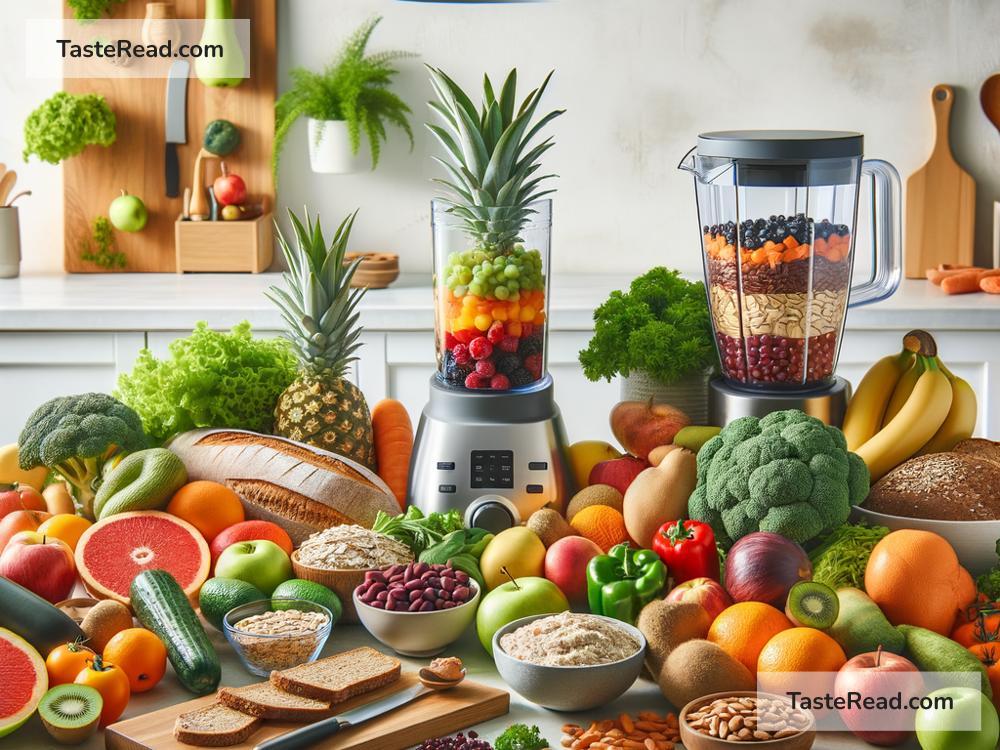How to Incorporate More High-Fiber Foods into Your Diet
Fiber is one of the most important nutrients for maintaining a healthy and balanced diet. It helps with digestion, keeps us feeling full, and can even lower the risk of heart disease, diabetes, and certain types of cancer. However, many people don’t eat enough fiber every day. The recommended amount is about 25 grams for women and 38 grams for men. If you’re wondering how to add more fiber to your diet, don’t worry—making small changes can lead to big results. Let’s dive into some easy ways to include more fiber-rich foods into your daily meals.
Start Your Day with Fiber-Rich Breakfasts
Breakfast is the perfect opportunity to load up on fiber. Instead of sugary cereals, choose whole grain options like oatmeal, whole grain toast, or bran cereal. These foods pack a fiber punch and will keep you full for longer.
You can also add other fiber ingredients to your breakfast. Try topping your oatmeal with fruits like berries, bananas, or apples. Sprinkle chia seeds, ground flaxseeds, or nuts for an extra boost of fiber. If you prefer smoothies, blend in a handful of spinach, a seed mix, and fibrous fruits like pears or oranges to make it more satisfying.
Focus on Fruits and Vegetables
Fruits and vegetables are natural sources of fiber, making them easy to include in every meal and snack. Aim for a variety of colors because different types of produce contain different nutrients and fiber amounts.
For snacks, grab a piece of fruit like an apple, pear, or orange instead of chips or cookies. You can also enjoy raw vegetables, such as baby carrots, celery sticks, and cucumber slices, paired with hummus or guacamole for a filling high-fiber treat.
At lunch and dinner, add a side of vegetables to your plate. Roasted asparagus, sautéed spinach, or steamed broccoli are easy options. If you’re making soup, stew, or pasta, toss in some extra vegetables such as zucchini, mushrooms, or carrots. Even salads can get extra fiber if you include leafy greens, peas, or beans.
Choose Whole Grains
When it comes to grains, always go for whole grain options. Whole grains keep all parts of the grain intact, making them higher in fiber than refined grains.
Swap white rice for brown rice, quinoa, barley, or bulgur. Pick whole grain bread, pasta, and tortillas instead of their white counterparts. When baking, substitute white flour for whole wheat flour or oat flour to add fiber to your recipes. Even snacks like crackers or granola should be made with whole grains for an easy boost.
Include Beans, Lentils, and Legumes
Beans, lentils, and other legumes are fiber superstars and incredibly versatile. Black beans, chickpeas, kidney beans, and lentils can be added to soups, salads, tacos, or wraps. They’re a great meat substitute for dishes like chili or burgers.
If you’re looking for simple recipes, try making lentil soup, a chickpea salad, or black bean tacos. You can even mix beans into dips like hummus or puree them into spreads for sandwiches.
Snack Smart
Snacks are another opportunity to sneak more fiber into your day. Instead of chips or candy, opt for high-fiber foods like nuts, seeds, or air-popped popcorn. Trail mix made with almonds, walnuts, and dried fruit is also a great option. Just be mindful of portion sizes when consuming calorie-dense items like nuts.
Another great snack idea is whole fruit, as mentioned earlier, or snacks that contain fiber, such as homemade bran muffins or fiber-rich granola bars.
Don’t Forget Fiber-Packed Add-Ins
There are plenty of ways to sneak fiber into your meals—even without changing your main ingredients. For example, sprinkle chia seeds, flaxseeds, or hemp seeds onto yogurt, salads, or smoothies. Add a handful of oats to your pancake or cookie batter. Stir beans into pasta sauces or casseroles, or even blend them into purees that can act as a thickener for soups.
Stay Hydrated
When increasing fiber in your diet, it’s important to drink plenty of water. Fiber works best when it has water to help move it through your digestive system. Being hydrated ensures you’ll benefit from the fiber and avoids potential side effects like constipation.
Make Gradual Changes
If you aren’t used to eating a lot of fiber, it’s best to increase your intake gradually. Suddenly adding too much fiber can cause bloating or stomach discomfort. Start with small changes, like swapping white bread for whole grain bread or adding an extra fruit to your snack, and build up slowly until you’re meeting the daily recommendations.
Closing Thoughts
Incorporating more high-fiber foods into your diet doesn’t have to be difficult. Focus on eating more fruits, vegetables, whole grains, beans, and seeds, and the fiber will naturally build up in your meals and snacks. Small swaps and additions can make a big difference over time. Not only will eating more fiber help improve your digestion, but it will also have long-term health benefits you can enjoy for years to come. So start making these simple changes today, and give your body the fiber it needs to thrive!


